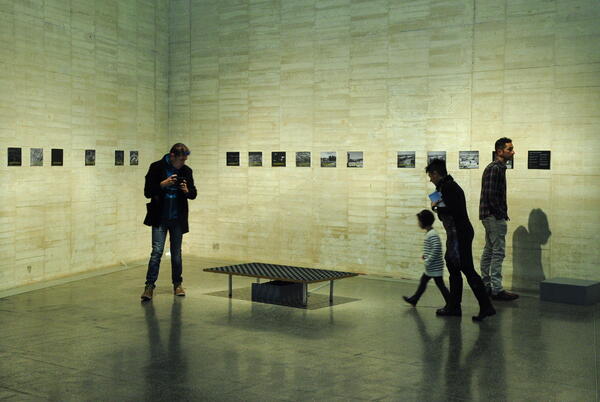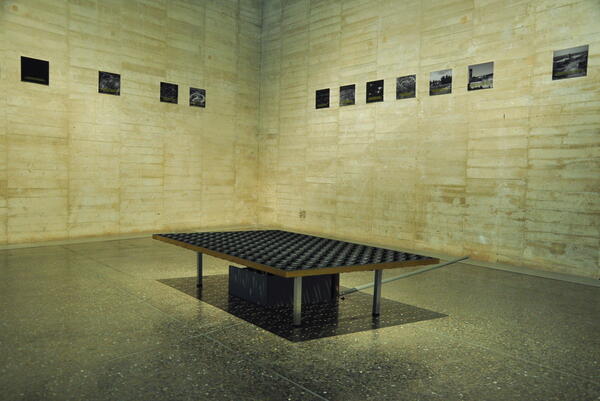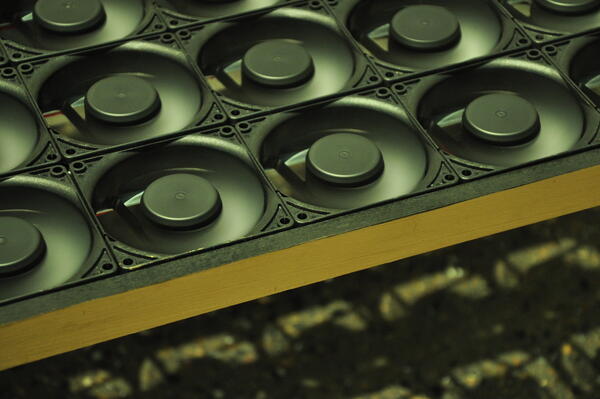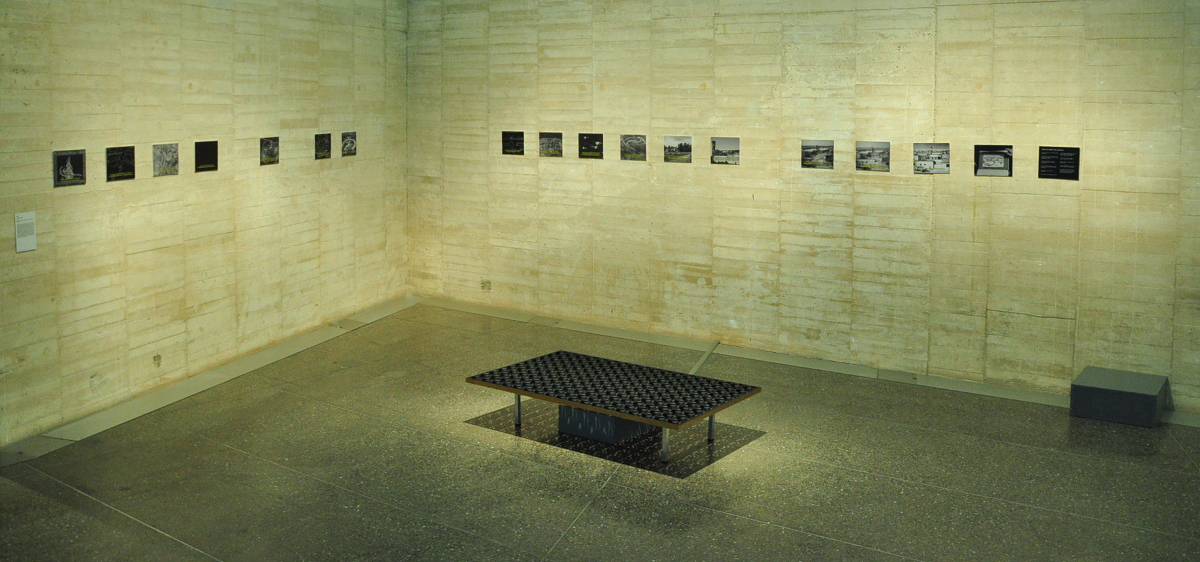Mawat
Instalación. Ventiladores, aluminio, altavoces, madera, electrónica e impresión digital. Medidas variables
2017
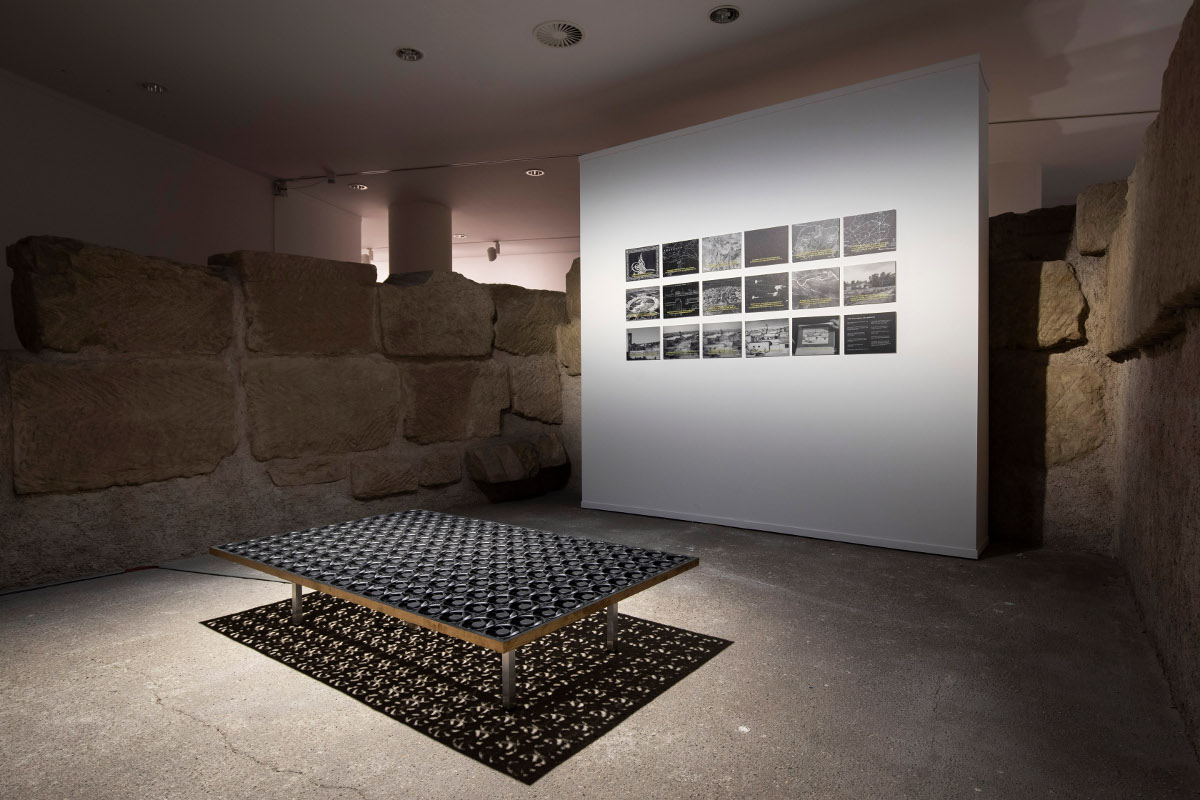
Una ley de colonización agraria del Imperio turco-otomano designó con el nombre de mawat a los terrenos desocupados dentro de sus fronteras. Para demarcarlos, la ley proporcionaba un criterio sonoro: una zona pasaba a ser mawat si los sonidos y las voces de la población más cercana dejaban de ser audibles. Mawat –muerte, en árabe– devino de este modo la característica administrativa de las tierras sin voz.
En la instalación, una retícula de ventiladores pone en circulación el aire de la sala. De forma periódica, el movimiento se detiene y la superficie pasa a funcionar como una estructura resonante. Viejas melodías del cancionero agrícola castellano llenan el espacio durante esos intervalos.
Al igual que en el caso otomano, la transformación del paisaje llevada a cabo por el Instituto Nacional de la Colonización estuvo basada también en la identificación y renovación de terrenos improductivos. Significativamente, uno de los aspectos llamativos de esta renovación es que muchos de los nuevos poblados nacieron sin cementerio. En Mawat, este detalle es recogido por una secuencia de imágenes alrededor de la pieza central. Ausencia, movimiento y retorno caracterizan un espacio marcadamente espectral. El sonido, en Mawat, abre la superficie y apunta a un suelo: el silencio material de la memoria.
Mawat takes the name of a law enacted by the Ottoman Empire on the occasion of an agrarian colonisation programme in the last quarter of the 19th century (Weizman, 2015, p.39). It is the name given to those barren lands prone to be expropriated by the government. In order to demarcate them, the rule provided a criterion based on sound: a zone was mawat if it was not in production and the sounds and voices of the nearest towns were no more audible. Mawat — meaning literally “dead” — became this way the administrative characteristic of the lands without voice.
In the installation, a grid of fan sets in circulation the air in the exhibition space. Periodically, the movement stops and the surface starts to work as a resonant structure . Old songs linked to agricultural practices fill the space during these moments.
As in the Ottoman case, the transformation of the landscape carried out by the National Institute of Colonisation was based too on the identification and renovation of unproductive lands. Significantly, many of the settler towns created during this program were built without graveyard. In Mawat, this notable detail is addressed in a sequence of images around the central piece. Absence, movement and reappearance characterise the spectral space of the installation. Instead of the strong visual nature of the colonising programme, the air is brought to the foreground, and with it, the blurred space where wind and voice coincide, undifferentiated, and in continuous flux.
Selected shows:
| 2023 | Motores del clima. Laboral Centro de Arte, Gijón |
| 2020 | Cinco itinerarios con un punto de vista. Colección MUSAC. MUSAC (León) |
| 2019 | Sin moldes. Escultura en la Colección MUSAC. Museo de La Rioja (Logroño) |
| 2018 | La memoria del territorio. VISIONA, Sala de exposiciones de la Diputación de Huesca (Huesca) |
| 2017 | Región (Los relatos). Fundación Cerezales Antonino y Cinia, MUSAC (León) |
Selected publications:
| 2022 | Abelardo Gil-Fournier, Fundir el espejo y esculpir la imagen. Tarkovsky, agricultura y la transformación del paisaje AISTHESIS: Revista Chilena de Investigaciones Estéticas |
| 2020 | Jussi Parikka, Yulia Gromova, Media Theory for The Terraforming Strelka Mag |
| 2018 | Pedro Vicente (ed.), La memoria del territorio Diputación Provincial de Huesca. Exhibition Catalogue |

